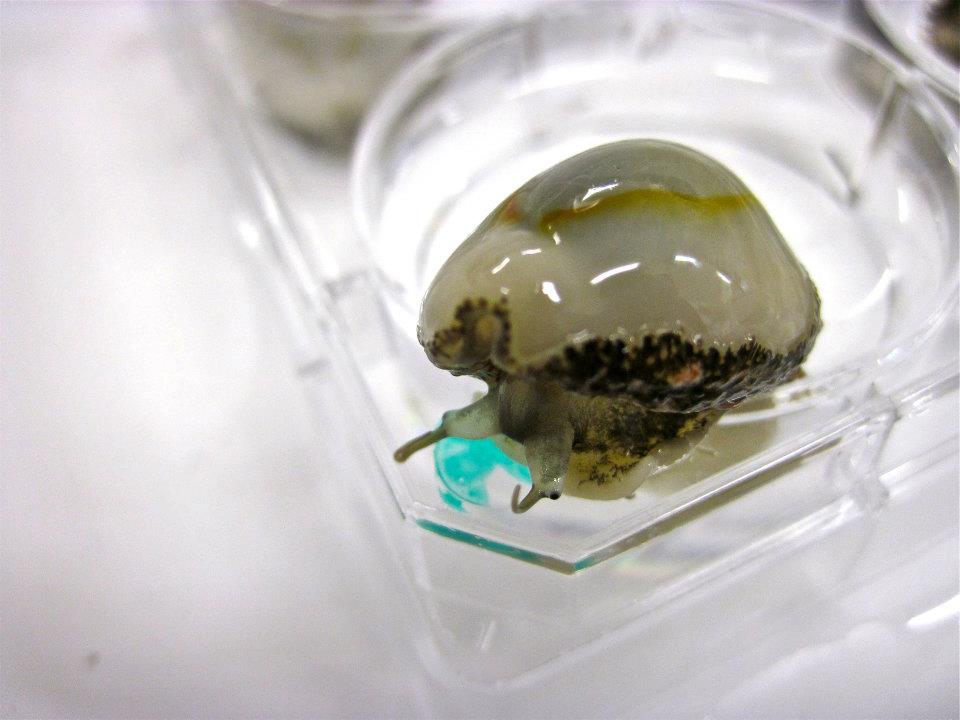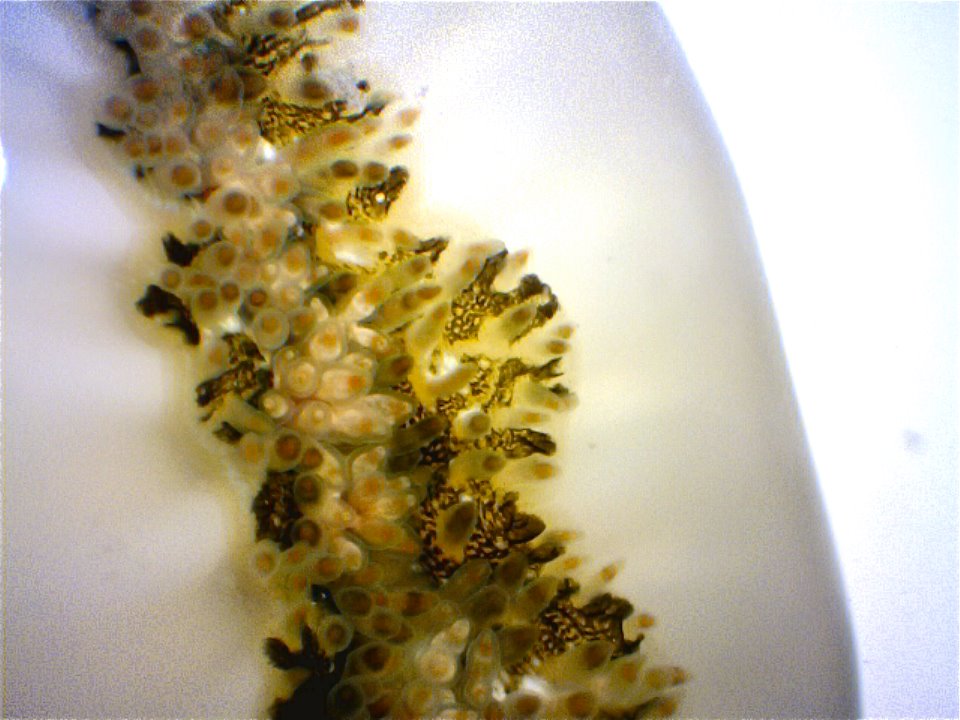Overview
Brief Summary
Physical Description
Shape & Size
Identification Resources
Ecology
Local Distribution & Habitats
Biogeographical Distribution
Crypsis & Defense
Life History & Behaviour
Growth & Development
Feeding
Locomotion
Sensory Systems & Behaviour
Reproduction
Evolution & Systematics
Systematics / Phylogenetics
Morphology and Physiology
External Morphology
Internal Anatomy
Conservation
Trends & Threats
Wikipedia
References & More Information
Bibliographies
Biodiversity Heritage Library
Search the Web
Names & Taxonomy
Synonyms & Names | Sensory Systems & Behaviour
The gastropod nervous system is ganglionated and cephalised at the anterior which reflects their active lifestyle. The gold ring cowry has 2 eye spots and many tentacles and sensilla. This fully developed sensory system results in sophisticated behaviours like feeding, locomotion and reproduction.
 
Eye spots on stalk sensilla, focused at the anterior end. Marginal tentacles & papillae of the fleshy mantle
A study conducted on gold cowry individuals on Heron Island found that this species does not differentiate between the contact of natural predators and artificial stimuli. It was also found that the gold cowry does not become habituated to stimulation. Cypraea annulus individuals (n=30) were kept in individual containers and we numbered. During the night, in darkness, the dorsum of each individual was touched with crab claws and a plastic rod of similar size. The retraction distance and speed of the mantle was recorded for each individual and this process was repeated five times more once the mantle had fully extended again. After each stimulation, the cowries would retract their mantle approximately 3/4 of the way on average. There was no significant difference in mantle retraction distance or speed for the crab claw and the plastic rod and theses results did not differ significantly over the five trials. From these results we can conclude that differentiation of and habituation to predator and non-predator stimuli does not occur for the gold ring cowry. It may be suggested that the anti-predator benefits associated with this response (deterring and confusing predators by extending and withdrawing mantle lobes) are far greater than the energetic costs of mantle retraction and extension. Although, long term habituation may be more likely occur and results may be different if a similar experiment was conducted in the field. |
|